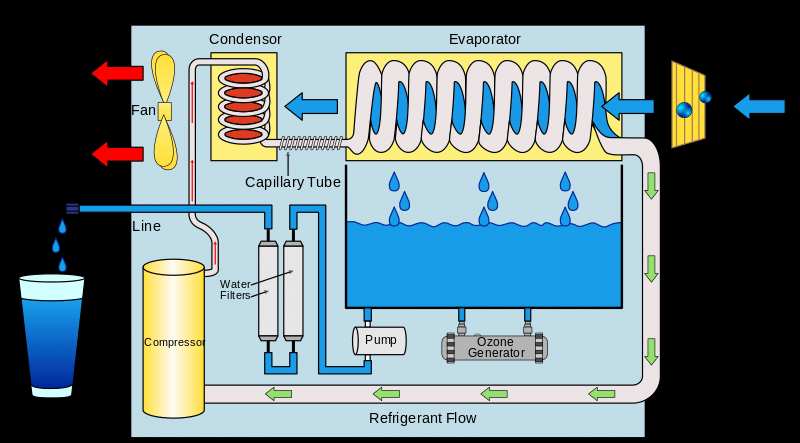Atmospheric water generator

An atmospheric water generator (AWG) is a device that extracts water from humid ambient air. Water vapor in the air can be extracted by condensation - cooling the air below its dew point, exposing the air to desiccants, or pressurizing the air. Unlike a dehumidifier, an AWG is designed to render the water potable. AWGs are useful where pure drinking water is difficult or impossible to obtain, because there is almost always a small amount of water in the air that can be extracted. The two primary techniques in use are cooling and desiccants.
The extraction of atmospheric water can require a significant input of energy. Some AWG methods are completely passive, relying on natural temperature differences, and requiring no external energy source.
Modern technologies
Many atmospheric water generators operate in a manner very similar to that of a dehumidifier: air is passed over a cooled coil, causing water to condense. The rate of water production depends on the ambient temperature, humidity, the volume of air passing over the coil, and the machine's capacity to cool the coil. These systems reduce air temperature, which in turn reduces the air's capacity to carry water vapor.
An alternative available technology uses liquid, or "wet" desiccants such as lithium chloride or lithium bromide to pull water from the air via hygroscopic processes. A proposed similar technique combines the use of solid desiccants, such as silica gel and zeolite, with pressure condensation. Direct drinking quality water generating devices using sun light are also under development.
